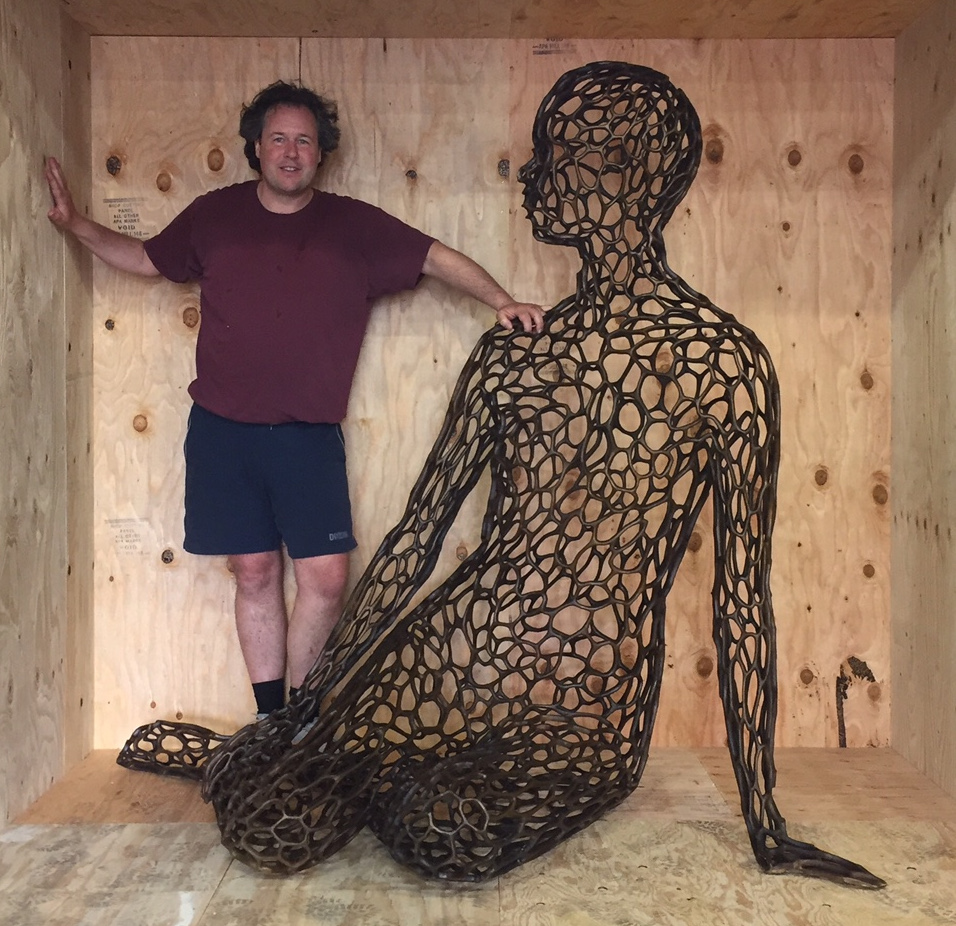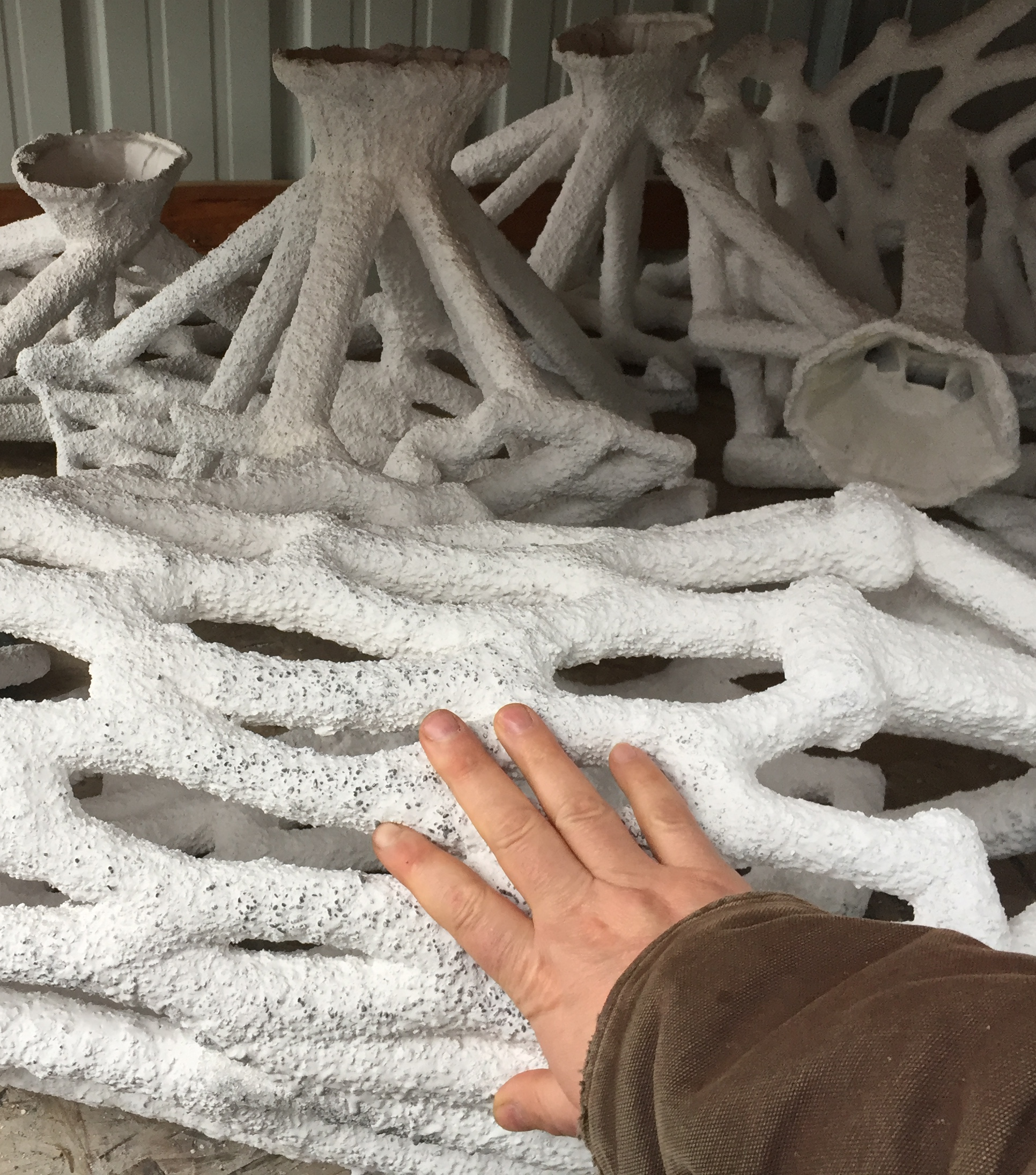
With a cluster of eight LulzBot TAZ 3D Printers and a passion for art, sculptor Julian Voss-Andreae is embracing 3D printing as an affordable way to help create monumental sculptures. His work has garnered worldwide attention, being featured in various broadcast and print media ranging from Oregon Public Broadcasting Television to Sculptural Pursuit magazine.
“3D printing and subsequent direct casting allows me to create sculptures of essentially arbitrary design for a price that is comparable with traditional hand sculpting methods,” Voss-Andreae said.
One of Voss-Andreae’s recent projects is a large-scale sitting female figure to be installed outside Georgia Tech’s new Engineered Biosystems Building (EBB). This particular sculpture, which features a Voronoi-inspired open lattice design to accommodate plant growth on the ground, will soon be unveiled and bring a sense of whimsy to the site while visually and conceptually tying in with the building’s fields of research.


[Watch a tour of Voss-Andreae's workspace.]

“They build useful parts, including parts used to upgrade them,” Voss-Andreae said. “They also print maquettes and parts of sculptures we are working on to plan the fabrication process and to aid in visualizing the end product.”
The long-term reliability and Open Source Hardware design of LulzBot 3D Printers helped guide Voss-Andreae’s purchasing decision and allowed for subsequent upgrades and modifications to be made.
 “The quality is pretty much as good as it gets,” Voss-Andreae said.
“The quality is pretty much as good as it gets,” Voss-Andreae said.
As a sculptor looking for ways to streamline the creative process, Voss-Andreae finds LulzBot 3D Printers valuable to his workflow.
“The main benefit to me is that I am now able to create life-size bronze sculptures for a price that allows experimentation,” Voss-Andreae said.
Explore More Creative Applications with LulzBot 3D Printers ➡
Photos licensed CC BY-SA 4.0 International © Julian Voss-Andreae.
